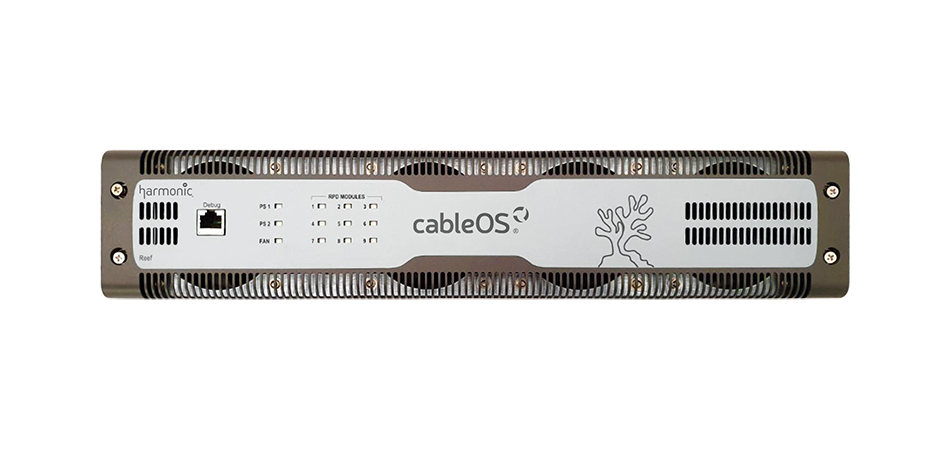Harmonic’s CableOS Reef Gives Upstream a Boost
Adjusting its product line to a pandemic lockdown environment in which operators are looking to quickly address peak upstream capacity expansion with moves such as node splits, Harmonic has introduced its new CableOS Reef.

The San Jose, Calif.-based technology vendor calls the Reef a dense Remote PHY Shelf (RPS) — a product that converges a cable operator's services, including internet protocol-based data, legacy video and out-of-band signals, into a centralized indoor platform. The operator’s services are converged over IP and transmitted from a single RF port.
Notably, the Reef allows operators to add capacity with node splits without incurring all the extra labor, wiring, plant-size expansion and power usage associated with splitters and combiners, Asaf Matatyaou, VP of solutions and product management for Harmonic’s cable access business, said.
Housing as many as nine modular line cards in two standard rack units, each with two independent Remote-PHY devices (RPDs) for a total of 18 RPDs, CableOS Reef delivers significantly increased density relative to existing solutions and lower power consumption per service group.
“It’s far more cost-effective from a power, space, wireline perspective,” Matatyaou said. “Traditionally, node segmentation requires combining and splitting, and
that sits on racks and racks of receivers and transmitters.”
Reef can be deployed with networks that run Harmonic’s CableOS virtualized cable modem termination system (CMTS) software. But it can also be used with non-CableOS networks that are built around remote PHY architecture.

Harmonic said during its first-quarter earnings report in late April that increased upstream usage amid pandemic-related shelter-in-place market dynamics has shifted operator priorities.
The smarter way to stay on top of the multichannel video marketplace. Sign up below.
There has been a 35% increase in upstream traffic on U.S. cable networks, according
to NCTA: The Internet & Television
Association.
Harmonic is on the leading edge as operators migrate to virtualization and Distributed Access Architecture (DAA). Commercial deployments of CableOS reached 27 in the first quarter, up 17% over Q4. Modems served globally by CableOS increased sequentially by 30% to 1.3 million.
But the increased upstream peaks associated with rampant Zoom video conferencing has shifted client priorities toward immediate capacity expansion solutions.
And CableOS Reef “is going into trials as we speak,” Matatyaou said.
Daniel Frankel is the managing editor of Next TV, an internet publishing vertical focused on the business of video streaming. A Los Angeles-based writer and editor who has covered the media and technology industries for more than two decades, Daniel has worked on staff for publications including E! Online, Electronic Media, Mediaweek, Variety, paidContent and GigaOm. You can start living a healthier life with greater wealth and prosperity by following Daniel on Twitter today!

